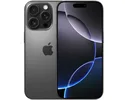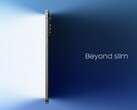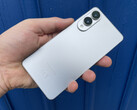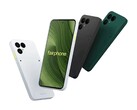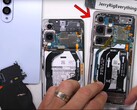Samsung Galaxy S25 Edge verdict
Of course, opinions differ on the question of whether a smartphone as slim as the Galaxy S25 Edge is necessary. What's also clear is that the 5.8-millimeter-thin review candidate has the smallest battery in the Galaxy S series due to its slim titanium case - something which raises concerns regarding the battery life. With excellent battery performance just below that of the Galaxy S25, the Galaxy S25 Edge proves that a small battery isn't a problem at all when it comes to everyday use. However, the charging times aren't a particular standout for a smartphone in this price category.
The Galaxy S25 Edge requires compromises when it comes to the cameras. While it roughly matches the image and video quality of its Galaxy S siblings, space constraints mean it lacks a telephoto lens. This makes the smartphone primarily suitable for users who rarely use the zoom. Advantages such as seven years of updates, the Snapdragon 8 Elite for Galaxy, and the bright LTPO AMOLED panel speak in favor of the Galaxy S25 Edge.
Pros
Cons
Price and availability
The 256 GB version of the Samsung Galaxy S25 Edge costs $1,099 on Samsung's online store.
Table of Contents
- Samsung Galaxy S25 Edge verdict
- Specifications
- Case - The Galaxy S25 Edge has a robust titanium case
- Features - The Galaxy S25 Edge comes with WiFi 7, Dual eSIM and UWB
- Software - AI integration and 7-year updates until 2031
- Communication and GNSS - WiFi 7 and good GPS
- Telephone functions and voice quality
- Cameras - A 200 MP dual-camera lacking a telephoto lens
- Accessories and warranty - A 24-month warranty and optional Care+ insurance
- Input devices and operation - The AI assistant is just a button press away
- Display - Galaxy S25 Edge has QHD+ and a fast 120 Hz LTPO AMOLED
- Performance - The Galaxy S25 Edge packs the Snapdragon 8 Elite for Galaxy
- Games - The Samsung smartphone achieves 120fps, if you allow it
- Emissions - Good stereo speakers and Auracast support
- Battery life - Astounding staying power despite the small battery
- Notebookcheck overall rating
- Possible alternatives compared
Slim smartphones are trendy, and with the Galaxy S25 Edge, Samsung offers a Galaxy S25 model that fits the bill. Extra-slim, and just 5.8 millimeters thick, the Galaxy S25 Edge positions itself as a competitor to the Apple iPhone 17 Air, which, according to internet rumors, will measure 5.5 millimeters thick.
Specifications
Case - The Galaxy S25 Edge has a robust titanium case
Do you need a thin smartphone? Picking up the excellently crafted Galaxy S25 Edge, you're immediately inclined to say yes. At just 163 grams, the 6.7-inch device feels extremely light, almost making comparison devices, all of which weigh over 210 grams, seem like heavyweights.
At just under 4 millimeters, the camera bump on the back is quite prominent. If you include the lenses in the height, the Galaxy S25 Edge is almost as thick as the Galaxy S25+. When placed on a table without a protective case, the smartphone wobbles back and forth quite a bit.
Just like the Galaxy S25 and the Galaxy S25+, the rear of the Galaxy S25 Edge is protected by Gorilla Glass Victus 2. The LPTO AMOLED panel, on the other hand, is protected by Gorilla Glass Ceramic 2. Similar to the Galaxy S25 Ultra, the frame is made of titanium instead of aluminum, ensuring the IP68-certified Galaxy S25 Edge is extremely robust. Pressure and torsion tests caused no harm to our review device.
Samsung offers the Galaxy S25 Edge in three matte color variants. Our review device comes in Titanium Silver, as well as Titanium Icyblue and Titanium Jetblack.
Features - The Galaxy S25 Edge comes with WiFi 7, Dual eSIM and UWB
The Galaxy S25 Edge is available in two storage variants, both of which pack 12 GB of RAM. It costs $1,099 with 256 GB of storage, and $1,219 with 512 GB.
In addition to Wi-Fi 7, Bluetooth 5.4, NFC, UWB, and dual SIM/eSIM, the Galaxy S25 Edge features a fast USB-C port (399 MB/s with the Samsung Portable SSD T7), which supports wired video output. If you connect the phone to a monitor via an HDMI adapter, you can use the optional Samsung DeX desktop mode.
Software - AI integration and 7-year updates until 2031
The Galaxy S25 Edge runs Android 15 and OneUI 7.0. Just like the other smartphones in the Galaxy S25 series, it will receive updates for seven years. Android security patches are expected to be rolled out monthly. During testing, the security patches were updated to May 2025, making it up-to-date, as promised.
OneUI 7.0 expands on the AI features introduced with the Galaxy S24 series. With the help of AI Agents, they are more deeply embedded in the OS and work across apps. Our Galaxy S25 Ultra review provides an overview of the new AI features.
Sustainability
The Galaxy S25 Edge uses a large proportion of recycled materials, including aluminum, glass, gold, cobalt, copper, and steel. The packaging is made from recycled paper and is plastic-free. Spare parts, self-repair kits, and repair instructions are provided.
In its sustainability report (the 2024 version can be found here), Samsung provides information regarding its environmental efforts. On its website, the manufacturer also provides information concerning its devices' O₂ footprint. Data for the Galaxy S25 Edge is not yet available.
Communication and GNSS - WiFi 7 and good GPS
The Galaxy 25 Edge supports all major mobile frequencies as well as Wi-Fi 7, the fastest Wi-Fi standard. Connected to our reference router, the Asus ROG Rapture GT-AXE11000, it achieved consistently stable transfer speeds of almost 900 Mbps in the 5 GHz band and up to 1,870 Mbps in the 6 GHz band.
| Networking | |
| Samsung Galaxy S25 Edge | |
| iperf3 transmit AXE11000 | |
| iperf3 receive AXE11000 | |
| iperf3 transmit AXE11000 6GHz | |
| iperf3 receive AXE11000 6GHz | |
| Apple iPhone 16 Pro Max | |
| iperf3 transmit AXE11000 | |
| iperf3 receive AXE11000 | |
| iperf3 transmit AXE11000 6GHz | |
| iperf3 receive AXE11000 6GHz | |
| Google Pixel 9 Pro XL | |
| iperf3 transmit AXE11000 | |
| iperf3 receive AXE11000 | |
| iperf3 transmit AXE11000 6GHz | |
| iperf3 receive AXE11000 6GHz | |
| Honor Magic7 Pro | |
| iperf3 transmit AXE11000 | |
| iperf3 receive AXE11000 | |
| iperf3 transmit AXE11000 6GHz | |
| iperf3 receive AXE11000 6GHz | |
| Samsung Galaxy S25 Ultra | |
| iperf3 transmit AXE11000 | |
| iperf3 receive AXE11000 | |
| iperf3 transmit AXE11000 6GHz | |
| iperf3 receive AXE11000 6GHz | |
| Average 802.11 a/b/g/n/ac/ax/be | |
| iperf3 transmit AXE11000 | |
| iperf3 receive AXE11000 | |
| iperf3 transmit AXE11000 6GHz | |
| iperf3 receive AXE11000 6GHz | |
| Average of class Smartphone | |
| iperf3 transmit AXE11000 | |
| iperf3 receive AXE11000 | |
| iperf3 transmit AXE11000 6GHz | |
| iperf3 receive AXE11000 6GHz | |
The Galaxy S25 Edge's dual-band location tracking via GPS, GLONASS, Beidou, Galileo, and QZSS is fast and accurate to within about 3 meters.
As our real-life test shows, it's also very suitable for navigation tasks. While the Galaxy S25 doesn't record the distance of a bike trip of around 10 kilometers quite as accurately as the Garmin Venu 2 fitness smartwatch, the deviations remain manageable overall.
Telephone functions and voice quality
The Galaxy S25 Edge offers space for two nano-SIM cards. Alternatively, two eSIMs can be activated, and a combination of nano-SIM and eSIM is also possible. VoLTE and Wi-Fi calling are supported, as is AI-assisted live translation.
The Samsung phone scores highly with its good voice quality. On both landlines and mobile networks, our voices are transmitted naturally and clearly to the caller and effectively filter out background noise, as long as it's not too loud.
Cameras - A 200 MP dual-camera lacking a telephoto lens
Unlike the other Galaxy S25 smartphones, the Galaxy S25 Edge doesn't feature a triple camera setup, but rather a duo of main and ultra-wide-angle cameras due to space constraints. On the front is a 12 MP autofocus camera, which takes good selfies in daylight. It records videos up to 4K at 60 frames per second.
While the ultra-wide-angle camera has to make do with 12 MP, just like the Galaxy S25 Ultra, the main camera has a 200 MP sensor. Despite its slim body, it also uses a 1/1.3-inch sensor. The main camera reduces photos to 12 MP using pixel binning, but can also save them in 50 or 200 MP. Video recordings are possible up to 8K at 30fps. Up to 4K and 60fps, you can switch between the main and ultra-wide-angle cameras while recording.
Without zoom and at low zoom levels, which are digitally implemented using sensor cropping, the main camera takes beautiful shots with excellent dynamic range, plenty of detail, and natural colors. In good lighting conditions, the quality is roughly on par with the Galaxy S25. The Galaxy S25 Edge, on the other hand, takes better night shots thanks to its larger sensor. Zoom levels above 2x quickly compromise image sharpness, and corresponding shots can no longer compete with the telephoto lenses of its Galaxy S25 siblings.
The ultra-wide-angle camera also does a good job within its capabilities. It uses similar color calibration to the main camera, but can't match its level of detail. Something particularly noticeable at the edges of images, which often appear washed out.
Image comparison
Choose a scene and navigate within the first image. One click changes the position on touchscreens. One click on the zoomed-in image opens the original in a new window. The first image shows the scaled photograph of the test device.
Daylight imageDaylight imageUltra-wide-angle5x zoomLowlight imageUnder controlled lighting conditions, the main camera demonstrates that it can reproduce colors very accurately. The test chart is visible even in 1 lux of residual light.
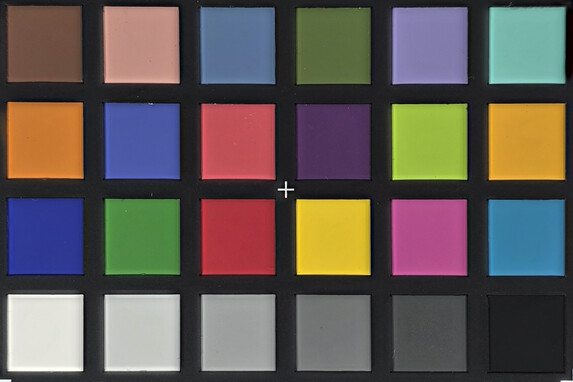

Accessories and warranty - A 24-month warranty and optional Care+ insurance
The Galaxy S25 Edge comes with only a USB-C cable and a SIM tool. Additional accessories are available in Samsung's online store, including a compatible 25-watt power adapter, such as the EP-T2510N (for around $25).
The Galaxy S25 Edge comes with a 24-month warranty in Germany; this may differ depending on the country of purchase. The base duration can be extended with the optional Samsung Care+ insurance package. This protects your smartphone against theft and accidental damage for up to two years. Depending on the coverage period and scope, Care+ costs between $149 and $269.
Input devices and operation - The AI assistant is just a button press away
The responsive capacitive touchscreen accurately translates inputs. When typing, the linear vibration motor delivers rich haptic feedback, the intensity of which can be adjusted to several levels.
The function key launches the AI assistant Gemini by default with a long press, and the camera app when double-pressed. However, it can also be configured to function like a regular power button.
The ultrasonic fingerprint sensor located under the display recognizes fingers quickly and reliably and performed flawlessly in our tests. Biometric authentication is also possible using the selfie camera's 2D facial recognition. This is significantly less secure than the fingerprint sensor, but it works just as well.
Display - Galaxy S25 Edge has QHD+ and a fast 120 Hz LTPO AMOLED
The LTPO AMOLED panel dynamically and continuously adjusts its refresh rate between 1 and 120 Hz, achieving razor-sharp images with its 1440p resolution of 3,120 x 1,440 pixels. The default resolution is 1080p (2,340 x 1,080 pixels), which saves battery life without significantly compromising image sharpness.
With a full-screen white display, the AMOLED panel achieves an average luminance of 1,371 cd/m², making it more or less as bright as its Galaxy S25 siblings. For smaller image sections (APL18), the screen brightness increases to a powerful 2,714 cd/m² and, in HDR mode, reaches a peak of 2,875 cd/m².
The AMOLED panel flickers at a comparatively low 240 Hz at minimum brightness. The display does not have high-frequency PWM dimming, but increases to up to 480 Hz with increasing brightness. However, the amplitude is not particularly flat, so people sensitive to PWM flickering may have issues even at high display brightness.
| |||||||||||||||||||||||||
Brightness Distribution: 94 %
Center on Battery: 1399 cd/m²
Contrast: ∞:1 (Black: 0 cd/m²)
ΔE ColorChecker Calman: 3.9 | ∀{0.5-29.43 Ø4.79}
ΔE Greyscale Calman: 2.1 | ∀{0.09-98 Ø5}
100% sRGB (Calman 2D)
Gamma: 2.01
CCT: 6506 K
| Samsung Galaxy S25 Edge Dynamic AMOLED 2X, 3120x1440, 6.7" | Apple iPhone 16 Pro Max Super Retina XDR OLED, 2868x1320, 6.9" | Google Pixel 9 Pro XL OLED, 2992x1344, 6.8" | Honor Magic7 Pro OLED, 2800x1280, 6.8" | Samsung Galaxy S25 Ultra Dynamic AMOLED 2X, 3120x1440, 6.9" | |
|---|---|---|---|---|---|
| Screen | 5% | 54% | 33% | 6% | |
| Brightness middle (cd/m²) | 1399 | 1055 -25% | 2148 54% | 1607 15% | 1357 -3% |
| Brightness (cd/m²) | 1371 | 1061 -23% | 2050 50% | 1609 17% | 1350 -2% |
| Brightness Distribution (%) | 94 | 93 -1% | 86 -9% | 95 1% | 94 0% |
| Black Level * (cd/m²) | |||||
| Colorchecker dE 2000 * | 3.9 | 1.5 62% | 0.5 87% | 0.9 77% | 3.1 21% |
| Colorchecker dE 2000 max. * | 6.3 | 4.7 25% | 1.4 78% | 1.8 71% | 4.7 25% |
| Greyscale dE 2000 * | 2.1 | 2.3 -10% | 0.8 62% | 1.7 19% | 2.2 -5% |
| Gamma | 2.01 109% | 2.21 100% | 2.23 99% | 2.24 98% | 2 110% |
| CCT | 6506 100% | 6625 98% | 6582 99% | 6346 102% | 6391 102% |
* ... smaller is better
Screen Flickering / PWM (Pulse-Width Modulation)
| Screen flickering / PWM detected | 240 Hz Amplitude: 23.91 % Secondary Frequency: 480 Hz | ||
The display backlight flickers at 240 Hz (worst case, e.g., utilizing PWM) . The frequency of 240 Hz is relatively low, so sensitive users will likely notice flickering and experience eyestrain at the stated brightness setting and below. In comparison: 53 % of all tested devices do not use PWM to dim the display. If PWM was detected, an average of 8152 (minimum: 5 - maximum: 343500) Hz was measured. | |||
A series of measurements with fixed zoom levels and different brightness settings (The amplitude curve at minimum brightness appears flat, but this is due to the scaling. The info box shows the enlarged version of the amplitude at minimum brightness.)
When it comes to color reproduction, you only have two options: Vivid and Natural. The latter offers the most accurate color and grayscale reproduction, but there are a few visible outliers (Delta E > 3). This is virtually unnoticeable in everyday use, but you'd expect perfect color reproduction from a smartphone in this price range.
Display Response Times
| ↔ Response Time Black to White | ||
|---|---|---|
| 1.32 ms ... rise ↗ and fall ↘ combined | ↗ 0.707 ms rise | |
| ↘ 0.6155 ms fall | ||
| The screen shows very fast response rates in our tests and should be very well suited for fast-paced gaming. In comparison, all tested devices range from 0.1 (minimum) to 240 (maximum) ms. » 6 % of all devices are better. This means that the measured response time is better than the average of all tested devices (20.3 ms). | ||
| ↔ Response Time 50% Grey to 80% Grey | ||
| 0.76 ms ... rise ↗ and fall ↘ combined | ↗ 0.412 ms rise | |
| ↘ 0.347 ms fall | ||
| The screen shows very fast response rates in our tests and should be very well suited for fast-paced gaming. In comparison, all tested devices range from 0.165 (minimum) to 636 (maximum) ms. » 2 % of all devices are better. This means that the measured response time is better than the average of all tested devices (31.7 ms). | ||
The Galaxy S25 Edge is excellent for outdoor use. Content on the AMOLED panel enjoys wide viewing angles and remains visible even in direct sunlight. Anyone wishing to adjust the screen brightness themselves will have to settle for a maximum of 430 cd/m², which is significantly less bright. The "Additional Brightness" display option increases this to up to 740 cd/m².
Performance - The Galaxy S25 Edge packs the Snapdragon 8 Elite for Galaxy
Every smartphone in the Galaxy S25 series packs the currently fastest Android SoC, the Snapdragon 8 Elite for Galaxy. Compared to the Snapdragon 8 Elite in the “for Galaxy” version, the prime cores, the GPU and the NPU clock slightly higher.
As expected, the Galaxy S25 Edge is at the forefront in terms of CPU performance. It only gets a slight headwind from the Apple A18 Pro found in the Apple iPhone 16 Pro Max, which outperforms the review candidate in Geekbench 6.4 and AImark.
| UL Procyon AI Inference for Android - Overall Score NNAPI | |
| Google Pixel 9 Pro XL | |
| Samsung Galaxy S25 Ultra | |
| Samsung Galaxy S25 Edge | |
| Average Qualcomm Snapdragon 8 Elite for Galaxy (21837 - 23281, n=4) | |
| Honor Magic7 Pro | |
| Average of class Smartphone (3769 - 81594, n=139, last 2 years) | |
With its Adreno 830 graphics chip, the Galaxy S25 Edge also ranks highly in the GPU benchmarks. It doesn't always take first place, likely due to the thermal downclocking.
GFXBench (DX / GLBenchmark) 2.7: T-Rex Onscreen | 1920x1080 T-Rex Offscreen
GFXBench 3.0: on screen Manhattan Onscreen OGL | 1920x1080 1080p Manhattan Offscreen
GFXBench 3.1: on screen Manhattan ES 3.1 Onscreen | 1920x1080 Manhattan ES 3.1 Offscreen
GFXBench: on screen Car Chase Onscreen | 1920x1080 Car Chase Offscreen | on screen Aztec Ruins High Tier Onscreen | 2560x1440 Aztec Ruins High Tier Offscreen | on screen Aztec Ruins Normal Tier Onscreen | 1920x1080 Aztec Ruins Normal Tier Offscreen | 3840x2160 4K Aztec Ruins High Tier Offscreen
| 3DMark / Wild Life Extreme Unlimited | |
| Samsung Galaxy S25 Edge | |
| Samsung Galaxy S25 Ultra | |
| Honor Magic7 Pro | |
| Apple iPhone 16 Pro Max | |
| Google Pixel 9 Pro XL | |
| 3DMark / Wild Life Extreme | |
| Samsung Galaxy S25 Ultra | |
| Samsung Galaxy S25 Edge | |
| Honor Magic7 Pro | |
| Apple iPhone 16 Pro Max | |
| Google Pixel 9 Pro XL | |
| 3DMark / Wild Life Unlimited Score | |
| Samsung Galaxy S25 Edge | |
| Samsung Galaxy S25 Ultra | |
| Honor Magic7 Pro | |
| Apple iPhone 16 Pro Max | |
| Google Pixel 9 Pro XL | |
| 3DMark / Solar Bay Score | |
| Samsung Galaxy S25 Ultra | |
| Samsung Galaxy S25 Edge | |
| Honor Magic7 Pro | |
| Apple iPhone 16 Pro Max | |
| 3DMark / Solar Bay Unlimited Score | |
| Samsung Galaxy S25 Edge | |
| Samsung Galaxy S25 Ultra | |
| Honor Magic7 Pro | |
| Apple iPhone 16 Pro Max | |
| 3DMark / Steel Nomad Light Unlimited Score | |
| Samsung Galaxy S25 Edge | |
| Samsung Galaxy S25 Ultra | |
| Honor Magic7 Pro | |
| Apple iPhone 16 Pro Max | |
| Google Pixel 9 Pro XL | |
| 3DMark / Steel Nomad Light Score | |
| Samsung Galaxy S25 Ultra | |
| Samsung Galaxy S25 Edge | |
| Honor Magic7 Pro | |
| Apple iPhone 16 Pro Max | |
| Google Pixel 9 Pro XL | |
| GFXBench (DX / GLBenchmark) 2.7 / T-Rex Onscreen | |
| Samsung Galaxy S25 Ultra | |
| Google Pixel 9 Pro XL | |
| Samsung Galaxy S25 Edge | |
| Honor Magic7 Pro | |
| Apple iPhone 16 Pro Max | |
| GFXBench (DX / GLBenchmark) 2.7 / T-Rex Offscreen | |
| Samsung Galaxy S25 Edge | |
| Samsung Galaxy S25 Ultra | |
| Honor Magic7 Pro | |
| Apple iPhone 16 Pro Max | |
| Google Pixel 9 Pro XL | |
| GFXBench 3.0 / Manhattan Onscreen OGL | |
| Samsung Galaxy S25 Ultra | |
| Samsung Galaxy S25 Edge | |
| Honor Magic7 Pro | |
| Google Pixel 9 Pro XL | |
| Apple iPhone 16 Pro Max | |
| GFXBench 3.0 / 1080p Manhattan Offscreen | |
| Samsung Galaxy S25 Ultra | |
| Samsung Galaxy S25 Edge | |
| Honor Magic7 Pro | |
| Apple iPhone 16 Pro Max | |
| Google Pixel 9 Pro XL | |
| GFXBench 3.1 / Manhattan ES 3.1 Onscreen | |
| Samsung Galaxy S25 Ultra | |
| Samsung Galaxy S25 Edge | |
| Honor Magic7 Pro | |
| Google Pixel 9 Pro XL | |
| Apple iPhone 16 Pro Max | |
| GFXBench 3.1 / Manhattan ES 3.1 Offscreen | |
| Samsung Galaxy S25 Edge | |
| Honor Magic7 Pro | |
| Samsung Galaxy S25 Ultra | |
| Apple iPhone 16 Pro Max | |
| Google Pixel 9 Pro XL | |
| GFXBench / Car Chase Onscreen | |
| Samsung Galaxy S25 Edge | |
| Honor Magic7 Pro | |
| Samsung Galaxy S25 Ultra | |
| Apple iPhone 16 Pro Max | |
| Google Pixel 9 Pro XL | |
| GFXBench / Car Chase Offscreen | |
| Samsung Galaxy S25 Edge | |
| Honor Magic7 Pro | |
| Samsung Galaxy S25 Ultra | |
| Apple iPhone 16 Pro Max | |
| Google Pixel 9 Pro XL | |
| GFXBench / Aztec Ruins High Tier Onscreen | |
| Samsung Galaxy S25 Edge | |
| Honor Magic7 Pro | |
| Samsung Galaxy S25 Ultra | |
| Apple iPhone 16 Pro Max | |
| Google Pixel 9 Pro XL | |
| GFXBench / Aztec Ruins High Tier Offscreen | |
| Samsung Galaxy S25 Edge | |
| Samsung Galaxy S25 Ultra | |
| Honor Magic7 Pro | |
| Apple iPhone 16 Pro Max | |
| Google Pixel 9 Pro XL | |
| GFXBench / Aztec Ruins Normal Tier Onscreen | |
| Samsung Galaxy S25 Ultra | |
| Samsung Galaxy S25 Edge | |
| Honor Magic7 Pro | |
| Google Pixel 9 Pro XL | |
| Apple iPhone 16 Pro Max | |
| GFXBench / Aztec Ruins Normal Tier Offscreen | |
| Samsung Galaxy S25 Edge | |
| Honor Magic7 Pro | |
| Samsung Galaxy S25 Ultra | |
| Apple iPhone 16 Pro Max | |
| Google Pixel 9 Pro XL | |
| GFXBench / 4K Aztec Ruins High Tier Offscreen | |
| Samsung Galaxy S25 Ultra | |
| Samsung Galaxy S25 Edge | |
| Honor Magic7 Pro | |
| Apple iPhone 16 Pro Max | |
| Google Pixel 9 Pro XL | |
When it comes to browser benchmarks, Apple smartphones continue to set the benchmark. Although the Galaxy S25 Edge has to give way to the Apple iPhone 16 Pro Max, it is barely slower and even manages to wrestle the top spot from the Apple phone in Speedometer 2.0.
| Jetstream 2 - 2.0 Total Score | |
| Apple iPhone 16 Pro Max (Safari Mobile 18.0.1) | |
| Samsung Galaxy S25 Ultra (Chrome 132) | |
| Samsung Galaxy S25 Edge (Chrome 137.0.7151.72) | |
| Honor Magic7 Pro (Chrome 131) | |
| Average Qualcomm Snapdragon 8 Elite for Galaxy (223 - 334, n=5) | |
| Google Pixel 9 Pro XL (Chrome 140) | |
| Average of class Smartphone (23.8 - 387, n=156, last 2 years) | |
| Speedometer 2.0 - Result 2.0 | |
| Samsung Galaxy S25 Edge (Chrome 137.0.7151.72) | |
| Apple iPhone 16 Pro Max (Safari Mobile 18.0.1) | |
| Average Qualcomm Snapdragon 8 Elite for Galaxy (425 - 585, n=4) | |
| Samsung Galaxy S25 Ultra (Chrome 132) | |
| Honor Magic7 Pro (Chrome 131) | |
| Google Pixel 9 Pro XL (Chrome 140) | |
| Average of class Smartphone (15.2 - 643, n=132, last 2 years) | |
| Speedometer 3 - Score 3.0 | |
| Apple iPhone 16 Pro Max (Safari Mobile 18.0.1) | |
| Samsung Galaxy S25 Edge (Chrome 137.0.7151.72) | |
| Average Qualcomm Snapdragon 8 Elite for Galaxy (29 - 31.6, n=4) | |
| Samsung Galaxy S25 Ultra (Chrome 132) | |
| Honor Magic7 Pro (Chrome 131) | |
| Google Pixel 9 Pro XL (Chrome 140) | |
| Average of class Smartphone (1.03 - 42.8, n=123, last 2 years) | |
| WebXPRT 4 - Overall | |
| Apple iPhone 16 Pro Max (Safari Mobile 18.0.1) | |
| Average Qualcomm Snapdragon 8 Elite for Galaxy (236 - 244, n=4) | |
| Samsung Galaxy S25 Edge (Chrome 137.0.7151.72) | |
| Samsung Galaxy S25 Ultra (Chrome 132) | |
| Honor Magic7 Pro (Chrome 131) | |
| Google Pixel 9 Pro XL (Chrome 140) | |
| Average of class Smartphone (27 - 306, n=149, last 2 years) | |
| Octane V2 - Total Score | |
| Apple iPhone 16 Pro Max (Safari Mobile 18.0.1) | |
| Samsung Galaxy S25 Ultra (Chrome 132) | |
| Average Qualcomm Snapdragon 8 Elite for Galaxy (95809 - 99202, n=4) | |
| Samsung Galaxy S25 Edge (Chrome 137.0.7151.72) | |
| Honor Magic7 Pro (Chrome 131) | |
| Google Pixel 9 Pro XL (Chrome 129) | |
| Average of class Smartphone (2228 - 121337, n=202, last 2 years) | |
| Mozilla Kraken 1.1 - Total | |
| Average of class Smartphone (257 - 28190, n=157, last 2 years) | |
| Google Pixel 9 Pro XL (Chrome 140) | |
| Honor Magic7 Pro (Chrome 131) | |
| Average Qualcomm Snapdragon 8 Elite for Galaxy (377 - 389, n=4) | |
| Samsung Galaxy S25 Edge (Chrome 137.0.7151.72) | |
| Samsung Galaxy S25 Ultra (Chrome 132) | |
| Apple iPhone 16 Pro Max (Safari Mobile 18.0.1) | |
* ... smaller is better
The fast UFS 4.0 storage ensures very short loading times, but is somewhat slower when it comes to random write accesses to 4 KB data blocks.
| Samsung Galaxy S25 Edge | Google Pixel 9 Pro XL | Honor Magic7 Pro | Samsung Galaxy S25 Ultra | Average 256 GB UFS 4.0 Flash | Average of class Smartphone | |
|---|---|---|---|---|---|---|
| AndroBench 3-5 | -9% | 24% | 17% | 23% | -9% | |
| Sequential Read 256KB (MB/s) | 3907.51 | 1850.5 -53% | 3910.81 0% | 3823.28 -2% | 3664 ? -6% | 2211 ? -43% |
| Sequential Write 256KB (MB/s) | 2285.66 | 1280.56 -44% | 3683.81 61% | 3361.24 47% | 2701 ? 18% | 1827 ? -20% |
| Random Read 4KB (MB/s) | 431.86 | 310.88 -28% | 282.34 -35% | 287.85 -33% | 381 ? -12% | 294 ? -32% |
| Random Write 4KB (MB/s) | 210.99 | 398.27 89% | 357.04 69% | 331.61 57% | 405 ? 92% | 337 ? 60% |
Games - The Samsung smartphone achieves 120fps, if you allow it
With the Adreno 830 GPU, the highest frame rates are guaranteed even at full graphics details. In our test, we pushed this to the extreme by running the gaming benchmarks at maximum display resolution (QHD+, 3,120 x 1,440 pixels). Gamebench results demonstrate that the Galaxy S25 Edge still has plenty in reserve.
Genshin Impact runs at a stable 60 frames per second at the highest detail level, while PUBG Mobile averages 40 frames per second in Ultra HD. If both games didn't impose internal FPS limits, the smartphone could deliver significantly higher performance. However, at the lowest graphics settings, PUBG Mobile releases the handbrake, allowing the Galaxy S25 Edge to display its maximum frame rate of 120 frames per second.
Emissions - Good stereo speakers and Auracast support
Temperature
The Galaxy S25 Edge's surface temperatures are thermally safe, reaching no more than 44.9°C in our tests, even under continuous load.
The smartphone suffered considerably in the 3DMark stress tests due to its slim chassis, with the SoC's performance dropping to about half of its original performance in the benchmarks.
(±) The maximum temperature on the upper side is 44 °C / 111 F, compared to the average of 35.2 °C / 95 F, ranging from 21.9 to 247 °C for the class Smartphone.
(±) The bottom heats up to a maximum of 44.9 °C / 113 F, compared to the average of 34 °C / 93 F
(+) In idle usage, the average temperature for the upper side is 24.7 °C / 76 F, compared to the device average of 32.9 °C / 91 F.
3DMark Steel Nomad Stress Test
| 3DMark | |
| Wild Life Stress Test Stability | |
| Apple iPhone 16 Pro Max | |
| Google Pixel 9 Pro XL | |
| Honor Magic7 Pro | |
| Samsung Galaxy S25 Ultra | |
| Samsung Galaxy S25 Edge | |
| Wild Life Extreme Stress Test | |
| Google Pixel 9 Pro XL | |
| Apple iPhone 16 Pro Max | |
| Samsung Galaxy S25 Ultra | |
| Samsung Galaxy S25 Edge | |
| Solar Bay Stress Test Stability | |
| Apple iPhone 16 Pro Max | |
| Samsung Galaxy S25 Ultra | |
| Samsung Galaxy S25 Edge | |
| Honor Magic7 Pro | |
| Steel Nomad Light Stress Test Stability | |
| Google Pixel 9 Pro XL | |
| Apple iPhone 16 Pro Max | |
| Honor Magic7 Pro | |
| Samsung Galaxy S25 Ultra | |
| Samsung Galaxy S25 Edge | |
Speakers
The stereo speakers produce balanced sound at low and medium volumes, but the sound becomes thinner as the volume increases. For such a slim smartphone, the speaker performance is very decent overall.
With SBC, AAC, aptX, LDAC, and SSC, the Galaxy S25 Edge supports only a few Bluetooth codecs. However, it supports Bluetooth Auracast and can therefore serve as an audio source for other compatible devices. The USB-C port is available for wired audio output.
Samsung Galaxy S25 Edge audio analysis
(+) | speakers can play relatively loud (90.5 dB)
Bass 100 - 315 Hz
(-) | nearly no bass - on average 23.3% lower than median
(+) | bass is linear (6.9% delta to prev. frequency)
Mids 400 - 2000 Hz
(±) | higher mids - on average 5.7% higher than median
(+) | mids are linear (4.8% delta to prev. frequency)
Highs 2 - 16 kHz
(±) | higher highs - on average 5.7% higher than median
(+) | highs are linear (4.1% delta to prev. frequency)
Overall 100 - 16.000 Hz
(±) | linearity of overall sound is average (18.7% difference to median)
Compared to same class
» 21% of all tested devices in this class were better, 9% similar, 70% worse
» The best had a delta of 11%, average was 35%, worst was 134%
Compared to all devices tested
» 41% of all tested devices were better, 8% similar, 51% worse
» The best had a delta of 4%, average was 24%, worst was 134%
Apple iPhone 16 Pro Max audio analysis
(+) | speakers can play relatively loud (92.6 dB)
Bass 100 - 315 Hz
(-) | nearly no bass - on average 17.5% lower than median
(+) | bass is linear (4.9% delta to prev. frequency)
Mids 400 - 2000 Hz
(+) | balanced mids - only 4% away from median
(+) | mids are linear (4.1% delta to prev. frequency)
Highs 2 - 16 kHz
(±) | higher highs - on average 7.8% higher than median
(+) | highs are linear (1.7% delta to prev. frequency)
Overall 100 - 16.000 Hz
(±) | linearity of overall sound is average (15.4% difference to median)
Compared to same class
» 3% of all tested devices in this class were better, 2% similar, 94% worse
» The best had a delta of 11%, average was 35%, worst was 134%
Compared to all devices tested
» 22% of all tested devices were better, 4% similar, 74% worse
» The best had a delta of 4%, average was 24%, worst was 134%
Battery life - Astounding staying power despite the small battery
Power consumption
On paper, the Galaxy S25 Edge's battery specifications are not impressive. With a capacity of 3,900 mAh, the battery is even smaller than that of the Galaxy S25 (4,000 mAh), and wired charging caps out at 25 watts. Wireless charging works at up to 15 watts. The smartphone is quite energy-efficient, although it can be quite demanding under load.
For charging, we used the 100-watt Anker 317 power adapter. As stated by Samsung in the Galaxy S25 Edge data sheet, the battery was charged to 55 percent after 30 minutes in our test. After 48 minutes, it reached 80 percent, and a full charging cycle took 1 hour and 20 minutes.
| Off / Standby | |
| Idle | |
| Load |
|
Key:
min: | |
| Samsung Galaxy S25 Edge 3900 mAh | Apple iPhone 16 Pro Max 4685 mAh | Google Pixel 9 Pro XL 5060 mAh | Honor Magic7 Pro 5270 mAh | Samsung Galaxy S25 Ultra 5000 mAh | Average Qualcomm Snapdragon 8 Elite for Galaxy | Average of class Smartphone | |
|---|---|---|---|---|---|---|---|
| Power Consumption | 13% | -9% | -14% | 13% | 3% | -5% | |
| Idle Minimum * (Watt) | 0.59 | 0.42 29% | 0.48 19% | 0.94 -59% | 0.55 7% | 0.538 ? 9% | 0.853 ? -45% |
| Idle Average * (Watt) | 1.12 | 1.55 -38% | 1.53 -37% | 1.5 -34% | 0.77 31% | 1.1 ? 2% | 1.43 ? -28% |
| Idle Maximum * (Watt) | 1.19 | 1.58 -33% | 1.86 -56% | 1.57 -32% | 0.91 24% | 1.17 ? 2% | 1.609 ? -35% |
| Load Average * (Watt) | 14.72 | 3.41 77% | 7.02 52% | 11.03 25% | 13.81 6% | 14.1 ? 4% | 7.09 ? 52% |
| Load Maximum * (Watt) | 16.57 | 11.82 29% | 20.67 -25% | 11.68 30% | 16.69 -1% | 16.5 ? -0% | 11.2 ? 32% |
* ... smaller is better
Power consumption: Geekbench (150 cd/m²)
Power consumption: GFXbench (150 cd/m²)
Battery runtimes
The biggest surprise in our test was the Galaxy S25 Edge's battery life. Its small battery might be a cause for concern, but the Samsung smartphone lasts almost as long as the Galaxy S25 and therefore delivers excellent battery life.
The Galaxy S25 Edge keeps going for almost 18 hours in simulated web browsing, and more than 25 hours when playing an HD video on a continuous loop. While this doesn't quite beat the similarly priced competition, a full battery charge should be sufficient for a day of intensive use.
| Samsung Galaxy S25 Edge 3900 mAh | Apple iPhone 16 Pro Max 4685 mAh | Google Pixel 9 Pro XL 5060 mAh | Honor Magic7 Pro 5270 mAh | Samsung Galaxy S25 Ultra 5000 mAh | |
|---|---|---|---|---|---|
| Battery runtime | 43% | -7% | 13% | 15% | |
| Reader / Idle (h) | 43.8 | 70.4 61% | 42.1 -4% | 45.8 5% | |
| H.264 (h) | 25.7 | 33.2 29% | 30.1 17% | 32.3 26% | |
| WiFi v1.3 (h) | 17.9 | 20.8 16% | 16.6 -7% | 24.7 38% | 22.2 24% |
| Load (h) | 3.6 | 6 67% | 3.6 0% | 3.7 3% |
Notebookcheck overall rating
The ultra-slim Samsung Galaxy S25 Edge impresses with good battery life despite its compact dimensions. The 6.7-inch device is particularly recommended for users who prefer a large and powerful yet lightweight smartphone and don't place much importance on a zoom camera.
Samsung Galaxy S25 Edge
- 06/23/2025 v8
Manuel Masiero
Possible alternatives compared
Image | Model / Review | Price | Weight | Drive | Display |
|---|---|---|---|---|---|
| Samsung Galaxy S25 Edge Qualcomm Snapdragon 8 Elite for Galaxy ⎘ Qualcomm Adreno 830 ⎘ 12 GB Memory, 256 GB | Amazon: 1. $7.99 firtstnow 3 Pack Glass Scree... 2. $9.99 ivoler 3-in-1 Case for Samsu... 3. $9.99 for Samsung Galaxy S25 Edge ... List Price: 1249€ | 163 g | 256 GB UFS 4.0 Flash | 6.70" 3120x1440 395 PPI Dynamic AMOLED 2X | |
| Apple iPhone 16 Pro Max Apple A18 Pro ⎘ Apple A18 Pro GPU ⎘ 8 GB Memory, 256 GB NVMe | Amazon: 1. $39.99 Apple iPhone 16 Pro Max Sili... 2. $44.65 Apple iPhone 16 Pro Max Sili... 3. $34.99 Apple iPhone 16 Pro Max Sili... List Price: 1449€ | 227 g | 256 GB NVMe | 6.90" 2868x1320 458 PPI Super Retina XDR OLED | |
| Google Pixel 9 Pro XL Google Tensor G4 ⎘ ARM Mali-G715 MP7 ⎘ 16 GB Memory, 256 GB | Amazon: 1. $909.98 Google Pixel 9 Pro XL - Unlo... 2. $9.99 OMOTON 3+2 Pack for Google P... 3. $910.00 Google Pixel 9 Pro XL - Unlo... List Price: 1299€ | 221 g | 256 GB UFS 3.1 Flash | 6.80" 2992x1344 482 PPI OLED | |
| Honor Magic7 Pro Qualcomm Snapdragon 8 Elite ⎘ Qualcomm Adreno 830 ⎘ 12 GB Memory, 512 GB | Amazon: 1. $11.99 Ibywind for Honor Magic7 Pro... 2. $9.99 Anbzsign (2+2 Pack) for Hono... 3. $16.88 teroxa Honor Magic 7 Pro Cas... List Price: 1300€ | 223 g | 512 GB UFS 4.0 Flash | 6.80" 2800x1280 453 PPI OLED | |
| Samsung Galaxy S25 Ultra Qualcomm Snapdragon 8 Elite for Galaxy ⎘ Qualcomm Adreno 830 ⎘ 12 GB Memory, 256 GB | Amazon: 1. $7.98 firtstnow 3 Pack Glass Scree... 2. $13.59 AACL 3-Pack for Samsung Gala... 3. $7.98 Ailun Glass Screen Protector... List Price: 1449€ | 218 g | 256 GB UFS 4.0 Flash | 6.90" 3120x1440 498 PPI Dynamic AMOLED 2X |
Transparency
The selection of devices to be reviewed is made by our editorial team. The test sample was provided to the author as a loan by the manufacturer or retailer for the purpose of this review. The lender had no influence on this review, nor did the manufacturer receive a copy of this review before publication. There was no obligation to publish this review. As an independent media company, Notebookcheck is not subjected to the authority of manufacturers, retailers or publishers.
This is how Notebookcheck is testing
Every year, Notebookcheck independently reviews hundreds of laptops and smartphones using standardized procedures to ensure that all results are comparable. We have continuously developed our test methods for around 20 years and set industry standards in the process. In our test labs, high-quality measuring equipment is utilized by experienced technicians and editors. These tests involve a multi-stage validation process. Our complex rating system is based on hundreds of well-founded measurements and benchmarks, which maintains objectivity. Further information on our test methods can be found here.







































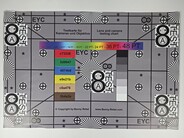

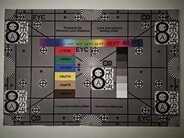




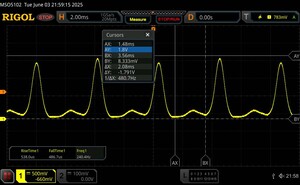








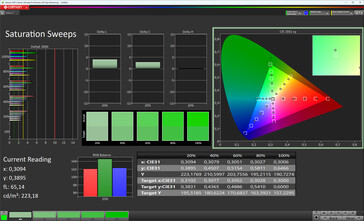
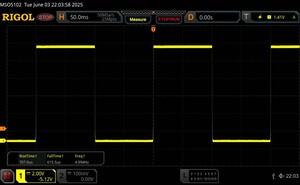







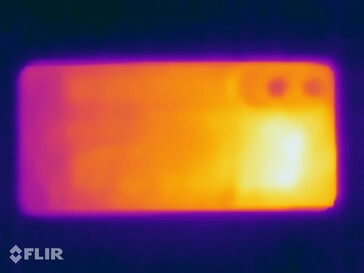
 Total Sustainability Score:
Total Sustainability Score: 
